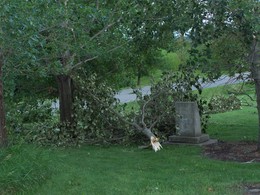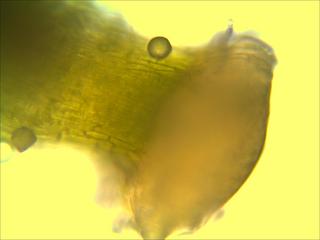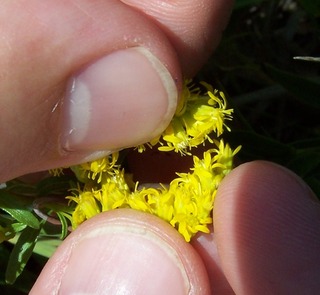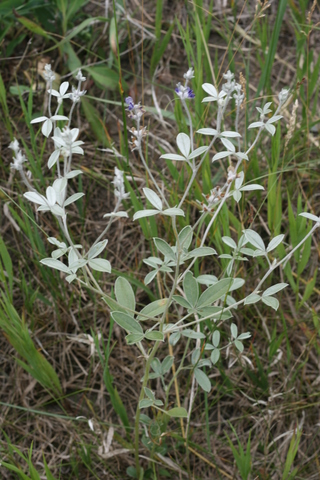Wow! Last year my last day of field research was a harvest day in September and I took heads from plants in the common garden and the last one from Hegg Lake plots,. This year we have started harvesting already and there are roughly one-fourth the heads to keep as there were a year ago. I tried but failed to get a good picture of harvesting but Shona clicked a nice one on Wednesday. While the wheat fields get harvested with big machines – some John Deere or Internationals, Echinacea harvesters are more “hands-on”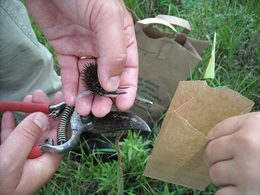
|
||||
|
I am slow to arrive at K-town this year because I am in transition of careers. I am moving from Great Plains Lutheran HS in Watertown, SD to Martin Luther College in New Ulm, MN where I will be a teaching professor in the biology department. I am excited to teach ecology in the fall with a summer background with team echinacea. I will still be only about 150 miles from K-town, just a different direction. I look forward to meeting the 2012 team and starting to help with projects. Our family moved the earthly possessions last week and we are settling in after making a wedding/reunion trip to Wisconsin. For Lee, I found that there is a good deal of Heli. heli at Aanenson – most bloomed the center head but not the sides. Attached is the “weather-tested” search protocol. While my partner found more than a dozen out of 75 or so, I found two out of 100. Maybe I am not the right person to write a protocol about finding these plants.?! It is very neat to think about these things being seedlings a year or two ago and now they are 20+ cm tall? plants that will produce seed…….sometime. This is the 3rd summer in a row that I have taken part of the Echinacea project! I teach 9-12 sciences (10th grade Biology)at Great Plains Lutheran High in Watertown, SD. Conducting summer research is the best way to incorporate real science into my classroom! While I was a pollen collector and image maker the first summer and a pollen crosser last summer; this summer I am going to collect insects that may or may not be moving pollen. Following the floral neighborhood study of 2009, I will collect and categorize insects from different sites to make an inventory of insect life. I hope it will shed some light on exactly which insects can be found and relate it to the diversity of the plants at sites. It will also be a useful collection for my students in the future. If someone is able- some in the CG and some at Nice Island to be pollinated still exist. Psoralea argophylla Solidago missouriensis For Solidago missouriensis at Nice Island: Flag ID Self ID Sprig Outcross ID Sprig Date Site The simplified protocol for crossing these plants (silverleaf scurfpea) is to find an uncrossed, flagged & bagged plant. Remove both bags, leaving the twist tie on the branch to be able to recognize it. Using a toothpick, transfer pollen from the donor flower on a plant to the receiver. (I have been doing a minimum of four and up to as many as possible on the branch) After the pollen is transferred, use a new toothpick to transfer pollen between the next two flowers. (Always a new toothpick) Then transfer to the “donors” of pollen on that same plant. For this pollen, use another flowering plant AT LEAST 5 meters away – to avoid them being clones. Individually transfer from donor flower to donor recipient. These sepals get painted pink and the twist tie should be red. Record the number of flowers (it can be more or less than the recipient number) and the color of paint and the twist tie. Sample data: It is tedious to get the anthers out of the sheath, but they are loaded with pollen- so touching the toothpick loads it even if you cannot see them. I checked some anthers under the microscope and there is a good deal of pollen – it is clear so it doesn’t show up as well as some asteraceae pollen. Not sure how many are needed, between the common garden and next to Hjelm house, could someone bag coreopsis palmata tops for me? My goal is to get 20 plants with two heads covered. That way I can self-pollinate one head and cross-pollinate another head. Josh, Gretel, Hillary, and Ian are also trained on the TopScan to collect the GPS data. The ideal is that the radio signal is at 100% and the designation of the location is described as Fixed – (Float will do and Auto works if you are unable to connect to a radio signal) |
||||
|
© 2025 The Echinacea Project - All Rights Reserved - Log in Powered by WordPress & Atahualpa |
||||

